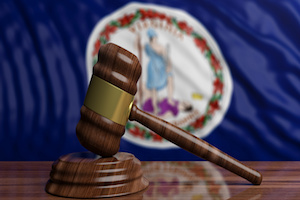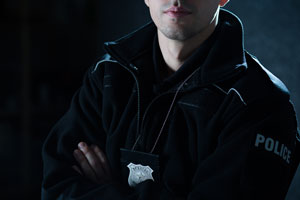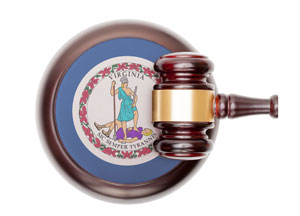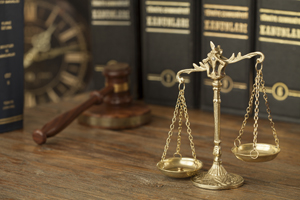Kimberly Long was convicted of murder in 2005. It took years for lawyers, with the assistance of forensic experts, to establish her innocence.
Long spent seven years in prison before she was released. The prosecution’s appeal of the order granting her a new trial left her wondering whether she would return to prison for a crime she didn’t commit. Fortunately, her freedom is now assured.
Facts of the Case
Long returned to her home in Corona, California, where she found the body of her boyfriend, Oswaldo Conde. Lacking any obvious suspects, the investigating officers in the Corona Police Department focused their investigation on the belief that Long had murdered him. They based that belief on the fact that Long was in an intimate relationship with Conde, she admitted having an argument with him before he died, and she called the police to report finding his body.
Long passed a polygraph test. Polygraph results are inadmissible in court, but the police like to use them to confirm their own suspicions. When the polygraph does not confirm their suspicions, they tend to dismiss the results.
A man named Jeff Dills told the police that he dropped Long off at her home 49 minutes before she called 911. Long told the police that she called 911 immediately after she discovered Conde’s body. The police viewed the discrepancy between Dills’ and Long’s timelines as evidence that confirmed Long’s guilt. Dills was also a suspect until he offered to cooperate with police.
Long was charged with murder based on Dills’ statement. Dills testified at a preliminary hearing but he died before Long’s trial. His preliminary hearing testimony was introduced as evidence at Long’s trial.
The first jury to hear the case hung, with nine jurors voting for acquittal. The second jury found her guilty. The verdict surprised the trial judge, who said that he would have acquitted her if the case had been tried to the court. California’s appellate courts nevertheless affirmed the conviction.
Federal courts that reviewed the conviction declined to vacate it, in part because federal statutes governing habeas corpus review severely restrict the power of federal judges to do justice in state criminal prosecutions. A district court judge said it was “unfortunate” that Long was convicted on the basis of preliminary hearing testimony given by a witness who died before trial. An appellate judge opined that it would have been nearly impossible for Long to commit the murder and eliminate all evidence of her involvement in the 49 minutes that she was allegedly with Conde before she called 911.
New Forensic Evidence
Eleven years after her conviction, Long asked for a new trial based on expert evidence that her trial lawyer failed to present. A forensic pathologist determined that Conde died hours before the time that Dills claimed he brought Long home. That evidence destroyed the prosecution’s weak theory of Long’s guilt.
Long also presented an expert opinion that Conde’s blood would have splattered onto his killer. Crime scene photos showed that blood had splattered in all directions from Conde’s body. No blood was found on Long’s clothing or body.
Finally, DNA evidence was detected at the crime scene that had not been previously analyzed. The DNA belonged to an unknown male.
The trial judge decided that Long’s attorney failed to provide Long with effective legal assistance. The lawyer should have retained experts and presented the evidence that Long identified eleven years later. The lawyer should also have discovered and presented evidence of death threats that Conde received from his ex-girlfriend.
Rather than conceding that it prosecuted an innocent person, the state appealed the judge’s order granting Long a new trial. The court of appeals decided that the performance of Long’s attorney was not deficient.
Supreme Court Decision
Long appealed to the California Supreme Court. The supreme court reversed the court of appeals’ decision.
The court recognized that an effective attorney would have consulted a time-of-death expert. The prosecution’s case depended entirely on the assumption that Long killed Conde less than an hour before she called 911. Given that fact, it was important for the defense to determine whether Conde actually died within that limited window.
The only expert consulted by Long’s lawyer was an accident reconstruction expert. That expert was an engineer who had no medical training that would allow him to determine a time of death.
A law professor with years of experience as a criminal defense lawyer testified that a reasonable lawyer would consult with a pathologist to obtain time-of-death evidence when time of death is critical to the prosecution’s case. Relying on an engineer was unreasonable.
The supreme court agreed with the trial court’s decision to grant Long a new trial. Facing a complete lack of evidence that Long murdered Conde, the prosecution recently announced that it would not retry Long. Whether the police will make a belated attempt to identify the actual killer is unclear.
Lessons Learned
The defense attorney testified that he didn’t do more because he assumed that time of death estimates cover a wide range of time and that the range would not have excluded Long as a possible killer. The supreme court pointed out that the lawyer made that assumption without consulting an expert witness.
The supreme court acknowledged that time-of-death estimates are often inexact. Yet the lawyer had no reason to believe “that any range derived from the available evidence would necessarily encompass the prosecution’s time frame — a time frame that tended to rule out the possibility that someone other than Long committed the crime.” The supreme court held that it was unreasonable to “write off the possibility that a time of death estimate would help exculpate Long” without first consulting with an expert.
Lawyers can make a reasonable judgment not to call an expert witness, but only an informed judgment is reasonable. The supreme court’s decision is a reminder that defense attorneys must consult with experts whenever an expert opinion might assist the defense. Lawyers should not assume that an expert witness will be unhelpful without consulting with an expert to determine whether an expert opinion might help create a reasonable doubt about a client’s guilt.













